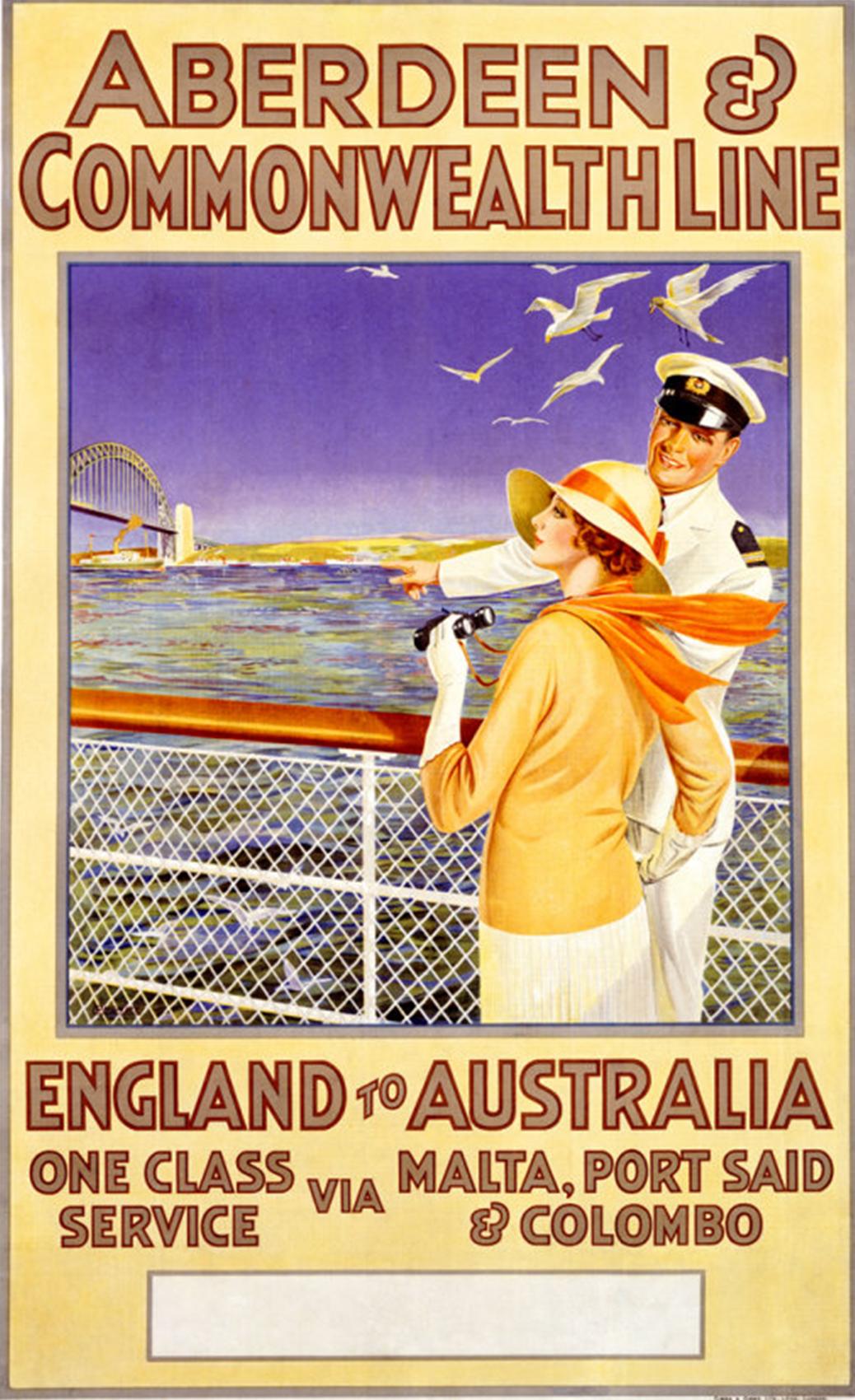Aberdeen Line on:
[Wikipedia]
[Google]
[Amazon]

 The Aberdeen Line was a shipping company founded in 1825 by George Thompson of
The Aberdeen Line was a shipping company founded in 1825 by George Thompson of 

 Changing fortunes put the company under joint control of
Changing fortunes put the company under joint control of
Aberdeen Line History and Ephemera
{{Authority control 1825 establishments in Scotland 1957 disestablishments in Scotland Companies based in Aberdeen Shipping companies of Scotland Transatlantic shipping companies British companies established in 1825 Transport companies disestablished in 1957 Transport companies established in 1825

Aberdeen
Aberdeen (; sco, Aiberdeen ; gd, Obar Dheathain ; la, Aberdonia) is a city in North East Scotland, and is the third most populous city in the country. Aberdeen is one of Scotland's 32 local government council areas (as Aberdeen City), ...
to take sailing vessels to the St. Lawrence river
The St. Lawrence River (french: Fleuve Saint-Laurent, ) is a large river in the middle latitudes of North America. Its headwaters begin flowing from Lake Ontario in a (roughly) northeasterly direction, into the Gulf of St. Lawrence, connecting ...
, carrying some passengers and returning with cargoes of timber. The business flourished and grew to 12 sailing vessels by 1837, travelling to South America
South America is a continent entirely in the Western Hemisphere and mostly in the Southern Hemisphere, with a relatively small portion in the Northern Hemisphere at the northern tip of the continent. It can also be described as the souther ...
, the Pacific
The Pacific Ocean is the largest and deepest of Earth's five oceanic divisions. It extends from the Arctic Ocean in the north to the Southern Ocean (or, depending on definition, to Antarctica) in the south, and is bounded by the continen ...
, West Indies
The West Indies is a subregion of North America, surrounded by the North Atlantic Ocean and the Caribbean Sea that includes 13 independent island countries and 18 dependencies and other territories in three major archipelagos: the Great ...
and the Mediterranean
The Mediterranean Sea is a sea connected to the Atlantic Ocean, surrounded by the Mediterranean Basin and almost completely enclosed by land: on the north by Western and Southern Europe and Anatolia, on the south by North Africa, and on th ...
. In 1842 the line included a regular schedule from London to Australia.
The Aberdeen Line’s best known ship was the clipper
A clipper was a type of mid-19th-century merchant sailing vessel, designed for speed. Clippers were generally narrow for their length, small by later 19th century standards, could carry limited bulk freight, and had a large total sail area. "Cl ...
''Thermopylae'', launched in 1868, and constructed with the ‘Aberdeen Bow
''Scottish Maid'' was a Scottish packet boat, a two-masted wooden schooner, built at Alexander Hall and Sons' boatyard in 1839 for the Aberdeen Line. She has been described as the first clipper vessel to be built in Britain. Her design of sharp ...
’, designed for greater speed and seaworthiness. The clipper set new records for voyages to and from Australia and the Far East.
In 1872, her nearest rival, ''Cutty Sark
''Cutty Sark'' is a British clipper ship. Built on the River Leven, Dumbarton, Scotland in 1869 for the Jock Willis Shipping Line, she was one of the last tea clippers to be built and one of the fastest, coming at the end of a long period o ...
,'' lost by seven days in a race from Shanghai to London. ''Thermopylae'' was acknowledged to be the fastest sailing ship afloat.
The arrival of the steamship signalled the end of the sailing era, but enabled the line to introduce a regular service between London and Australia in 1882 and by 1899 all the vessels were able to carry frozen produce.


 Changing fortunes put the company under joint control of
Changing fortunes put the company under joint control of White Star Line
The White Star Line was a British shipping company. Founded out of the remains of a defunct packet company, it gradually rose up to become one of the most prominent shipping lines in the world, providing passenger and cargo services between ...
and Shaw, Savill & Albion Line
Shaw, Savill & Albion Line was the trading name of Shaw, Savill and Albion Steamship Company, a British shipping company that operated ships between Great Britain, Australia and New Zealand.
History
The company was created in 1882 by the ama ...
in 1905, while retaining a degree of autonomy. In 1928 the White Star Line took over the Government-owned Australian Commonwealth Line, but in 1931 White Star Line's holding company, the Kylsant shipping group, collapsed. A year later Shaw, Savill & Albion bought the Aberdeen Line and in 1933 the former Australian Commonwealth Line was incorporated and the Aberdeen & Commonwealth Line was founded. Furness Withy & Co took over Shaw Savill & Albion in 1936. By 1957 the last of the ships was scrapped and the company dissolved.
References
External links
Aberdeen Line History and Ephemera
{{Authority control 1825 establishments in Scotland 1957 disestablishments in Scotland Companies based in Aberdeen Shipping companies of Scotland Transatlantic shipping companies British companies established in 1825 Transport companies disestablished in 1957 Transport companies established in 1825